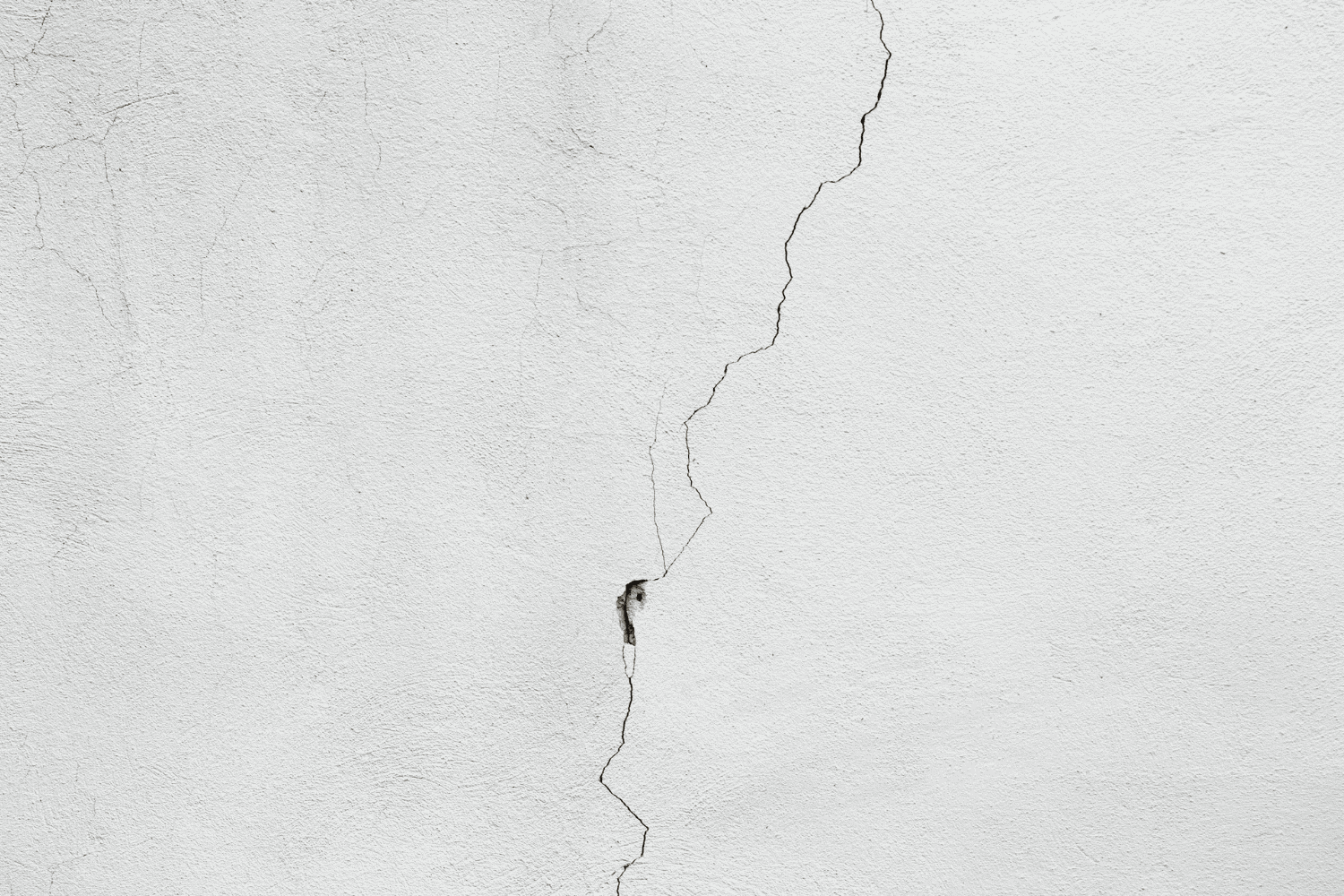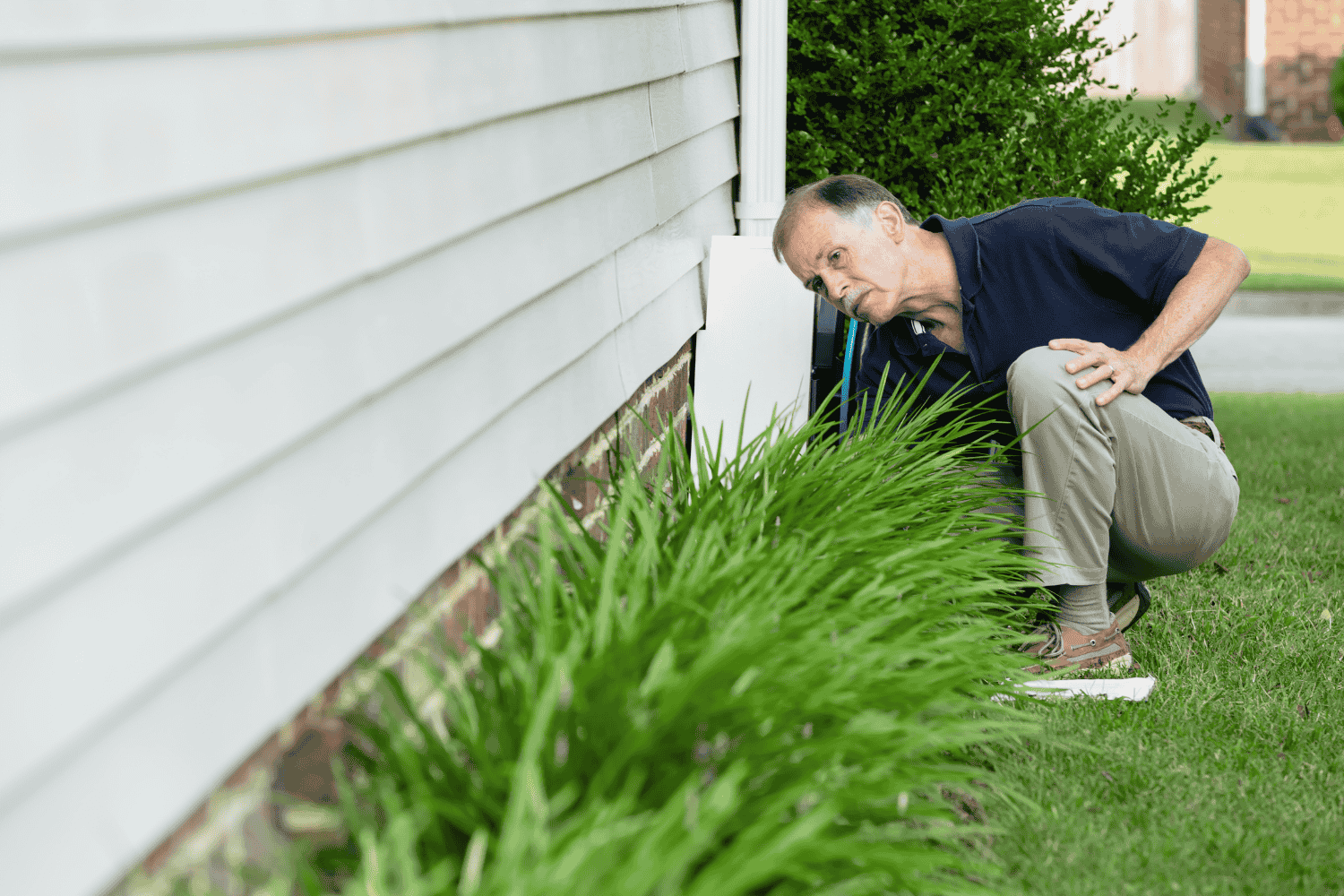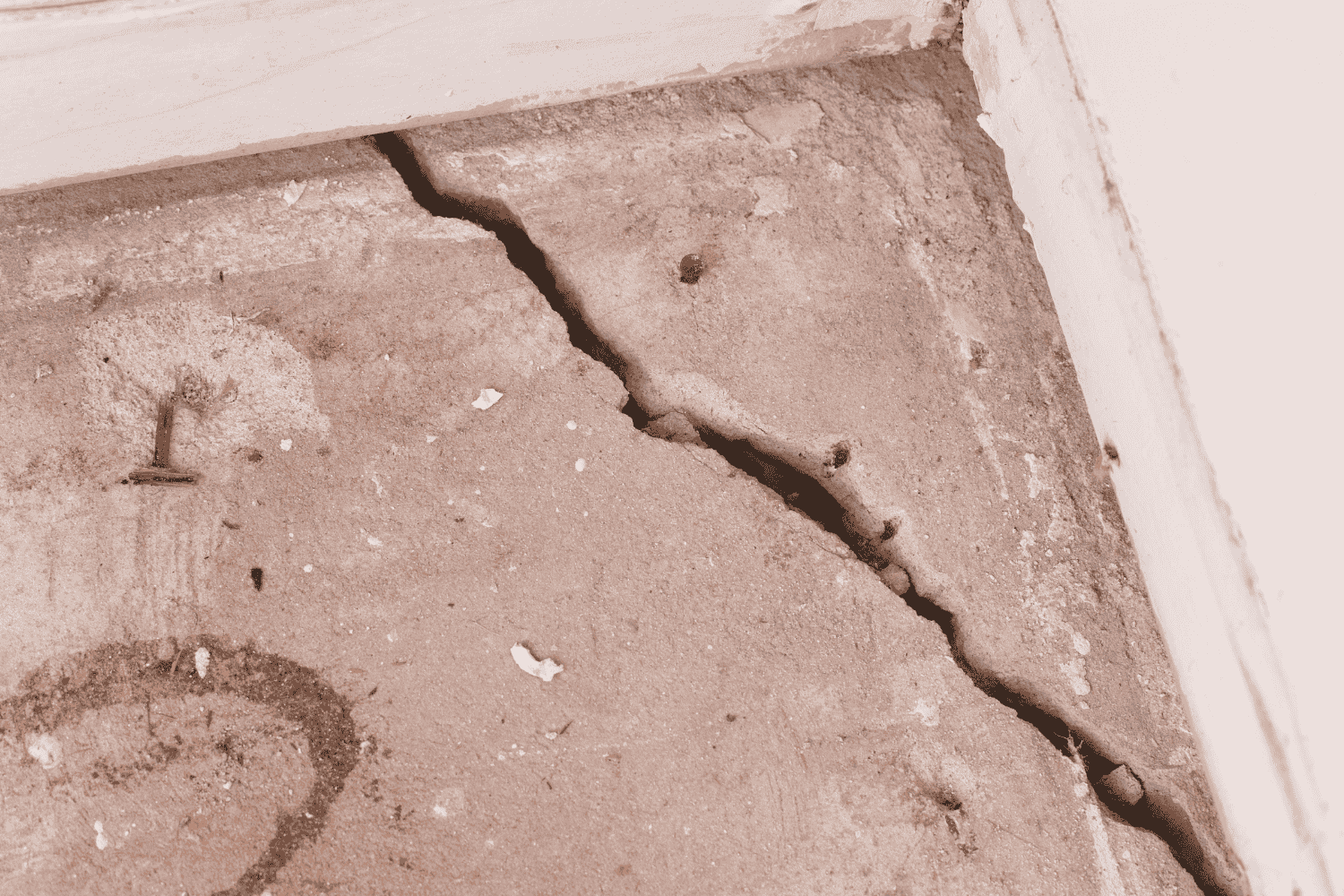When to Worry About Cracks in Foundation: Warning Signs
Foundation cracks can be alarming, but knowing when to worry about cracks in foundation is crucial to maintaining your home’s structural integrity.
This article will help you identify which cracks are serious and need immediate attention. Learn to recognize the warning signs, understand the types of cracks, and know when it’s time to call a professional.
Key Takeaways
-
Foundation cracks can signal serious structural issues, with horizontal cracks being the most concerning due to potential collapse risks.
-
Cracks wider than 1/8 inch, signs of water leakage, or uneven surfaces indicate urgent foundation problems that require professional evaluation.
-
Preventative measures such as proper drainage, soil grading, and regular inspections are vital to maintain foundation integrity and avoid costly repairs.
Causes of Foundation Cracks

Various factors can lead to foundation cracks, each contributing uniquely. Recognizing these causes helps in diagnosing and addressing foundation issues. Key causes include:
-
Poor construction
-
Soil movement
-
Water damage
-
Settlement
Water is particularly detrimental to a well-designed foundation, causing potential damage if not properly managed. Soil movement and pressure can create structural cracks that threaten foundation integrity. If a crack appears to be enlarging, it may signal a deeper issue needing immediate attention.
Foundation cracks can be horizontal, vertical, diagonal, or stair-step, each indicating potential underlying issues. Understanding each type helps in identifying their causes and implications.
Horizontal Cracks
Horizontal cracks in foundation walls are particularly alarming as they often signal severe structural risks. These types of cracks can indicate that the foundation is being pushed by external soil pressure, often due to improper soil grading or poor drainage around the foundation. A proper soil grading slope of at least 6 inches over the first 10 feet ensures water flows away from the foundation, preventing pooling and subsequent pressure and cracks. If horizontal cracks are found, they require immediate attention from a foundation repair company, and it’s recommended to call several foundation crack experts for opinions and repair options.
These cracks are serious because they compromise the structural integrity of the walls and can lead to further damage if left unaddressed. The pressure from the soil can cause the walls to bow inward, increasing the risk of collapse. Identifying and addressing horizontal cracks promptly prevents more extensive foundation damage.
Vertical Cracks
Vertical cracks in foundation walls usually result from foundation settling or the concrete curing process. Although often less severe than horizontal cracks, they still require monitoring for potential water seepage.
Vertical cracks are commonly repaired using epoxy. Alternatively, polyurethane crack injection can also be employed for this purpose. A vertical crack that shows no moisture and doesn’t fit a quarter inside it typically poses no immediate threat.
Diagonal Cracks
Diagonal cracks in foundation walls often result from concrete curing or settlement. They may also occur due to differential settlement, indicated by one side of the foundation pushing out more or sinking below the other.
Cracks that appear when one side of the foundation is heaving could be caused by hydrostatic pressure or differential settlement. A diagonal crack that continues to grow after six months warrants concern.
Stair Step Cracks
Stair-step cracks are found primarily in the mortar joints of block foundations and are indicative of differential settlement. The presence of stair-step cracks suggests major structural problems that pose a serious threat to the foundation’s integrity.
If a quarter fits into the foundation crack, calling a contractor for a professional inspection is advisable.
Signs That a Foundation Crack is Serious

Recognizing serious foundation cracks can save you from extensive repairs and structural damage. Key indicators include: Vertical cracks spanning the entire height of a wall may signal serious structural issues. Diagonal cracks at window or door corners could indicate misalignment and structural problems. Cracks wider than 1/8 inch can indicate potential structural damage, requiring professional assessment.
Multiple hairline cracks that cluster together can signal serious problems. Untreated, they can worsen and compromise the home’s structure.
Wide Cracks
Cracks wider than 1/8 inch indicate serious foundation problems, requiring professional evaluation for proper foundation crack repair and assessment. Professionals should address any cracks wider than 1/8 inch to prevent cracks further damage.
Water Leaking Through Cracks
Damp concrete or water around a crack after rainfall suggests potential water infiltration. Water leaking through foundation cracks can damage belongings, walls, and floors, and encourage mold growth. Quickly address any water coming from a crack and consider stabilization and basement waterproofing services.
Heaving or Uneven Cracks
A crack where one side is higher indicates foundation movement needing immediate attention. Heaving on one side reveals ongoing movement requiring professional inspection. Ignoring signs of foundation movement can lead to significant structural damage, necessitating timely intervention.
Common Types of Foundation Cracks

Foundation cracks come in various forms, each with specific causes and implications. Identifying the type of crack aids in diagnosing the problem and determining the appropriate action.
Horizontal foundation cracks can result from freeze-thaw cycles and hydrostatic pressure. Unbalanced soil and hydrostatic water pressure can also cause horizontal cracks in basement foundations. Vertical foundation cracks, though typically less severe, still require monitoring for potential water seepage. Experts should evaluate cracks exceeding three-sixteenths inches to assess potential foundation issues.
Hairline cracks, common in new foundations, are usually cosmetic and appear within a year after installation due to natural settling. Patching a hairline crack with epoxy sealant prevents moisture infiltration.
Shrinkage cracks, resulting from drying concrete, are generally non-structural. These cracks develop as concrete loses moisture during drying, influenced by the concrete mix and natural setting. Shrinkage cracks typically appear within the first year after constructing a new home, a common occurrence in new builds.
Structural foundation cracks are indicated by an uneven foundation wall or cracks 1/4 inch or wider, often caused by temperature changes, soil pressure, and soil shrinkage. If you have a structural foundation crack, you may need an engineer’s specifications for repair.
Preventing Foundation Cracks

Preventing foundation cracks requires proactive measures to protect your home. Proper drainage, soil grading, and regular inspections are crucial for maintaining a healthy foundation.
Poor drainage around the foundation can worsen crack formation. Soil movement due to moisture changes can lead to foundation instability, while temperature fluctuations can cause materials to expand and contract, resulting in cracks. Sealants, epoxy injections, hydraulic cement, drainage, and waterproofing are recommended to stop more damage to foundation walls.
Maintaining Proper Drainage
A drainage system is vital to prevent water damage, with options including sump pumps and various types of drains. A French drain collects soil runoff and reroutes it to prevent hydrostatic pressure against the foundation. Maintaining gutters is crucial for foundation health as it improves drainage and prevents cracks from saturated soil.
Soil Grading
Proper soil grading prevents water accumulation around the foundation, reducing soil pressure issues and potential damage. Gutters and downspouts help divert water away, reducing the risk of pooling that can stress the soil. Grading the soil to slope away from the foundation creates a natural runoff area, effectively channeling excess water away.
Regular Inspections
Routine inspections are crucial for identifying early signs of foundation problems before they escalate. Addressing minor issues early can prevent worsening and potential structural damage. Regular inspections are essential to protect the foundation’s integrity.
DIY vs. Professional Foundation Repair
Deciding whether to tackle foundation crack repairs yourself or call a professional can be challenging. Homeowners can often manage minor, non-structural cracks with DIY epoxy sealants. Larger or structural cracks require professional evaluation to ensure the foundation’s safety and stability.
Homeowners can seal cracks themselves if they are 1/8 inch wide or less, not expanding, and show no signs of moisture. DIY repairs for hairline cracks cost approximately $200, compared to $400-$600 for professional services.
A professional should determine the seriousness of foundation cracks. If a foundation slab crack is larger than a hairline, consult a foundation expert for advice. Cracks wider than 1/8 inch require immediate professional attention. Any cracks showing signs of movement should also be addressed promptly.
Professional repair services typically offer warranties as a permanent solution, ensuring peace of mind for homeowners.
Impact of Foundation Cracks on Basements

Foundation cracks can cause significant issues in basements, including leaks and structural damage. Common cracks are typically found around basement windows and doors. Untreated wet foundation cracks can grow or lead to further water issues. Chipping on either side of a crack may indicate moisture intrusion, important for assessing foundation integrity.
Moisture entering through foundation cracks can promote mold and mildew growth. Addressing leaks caused by cracks prevents damage to belongings and maintains indoor air quality.
Structural issues in basement walls can arise from foundation cracks, requiring prompt assessment and repair. Cracks compromising structural integrity can lead to serious safety hazards if not repaired promptly. Pressure effects from horizontal cracks can cause basement walls to bow.
Summary
Understanding foundation cracks is crucial for maintaining the structural integrity of your home. From identifying the causes of different types of cracks to recognizing the signs of serious foundation issues, this guide provides a comprehensive overview to help you take proactive steps.
Remember, regular inspections, proper drainage, and timely repairs—whether DIY or professional—are key to preventing minor cracks from escalating into major problems. By staying vigilant and informed, you can protect your home from potential foundation damage and ensure a safe, stable living environment.
Frequently Asked Questions
What are the common causes of foundation cracks?
Foundation cracks are commonly caused by poor construction, soil movement, water damage, and settlement. Managing water around the foundation is crucial to prevent further issues.
When should I worry about horizontal cracks in my foundation?
You should worry about horizontal cracks in your foundation as they often indicate serious structural risks from external soil pressure, warranting immediate attention from a foundation repair company. Addressing these issues promptly can help prevent further damage.
How can I prevent foundation cracks?
To prevent foundation cracks, ensure proper drainage, grade the soil away from the foundation, and conduct regular inspections to identify any minor issues early. This proactive approach can safeguard your foundation’s integrity.
Can I repair foundation cracks myself?
Yes, you can repair small, non-structural foundation cracks yourself using epoxy sealants, but larger cracks or those suggesting structural problems should be assessed by professionals.
What impact do foundation cracks have on basements?
Foundation cracks can severely affect basements by allowing moisture intrusion, which can result in mold growth and undermine structural integrity. Therefore, addressing these cracks promptly is crucial for maintaining a safe and dry environment.
 574-318-3326
574-318-3326






